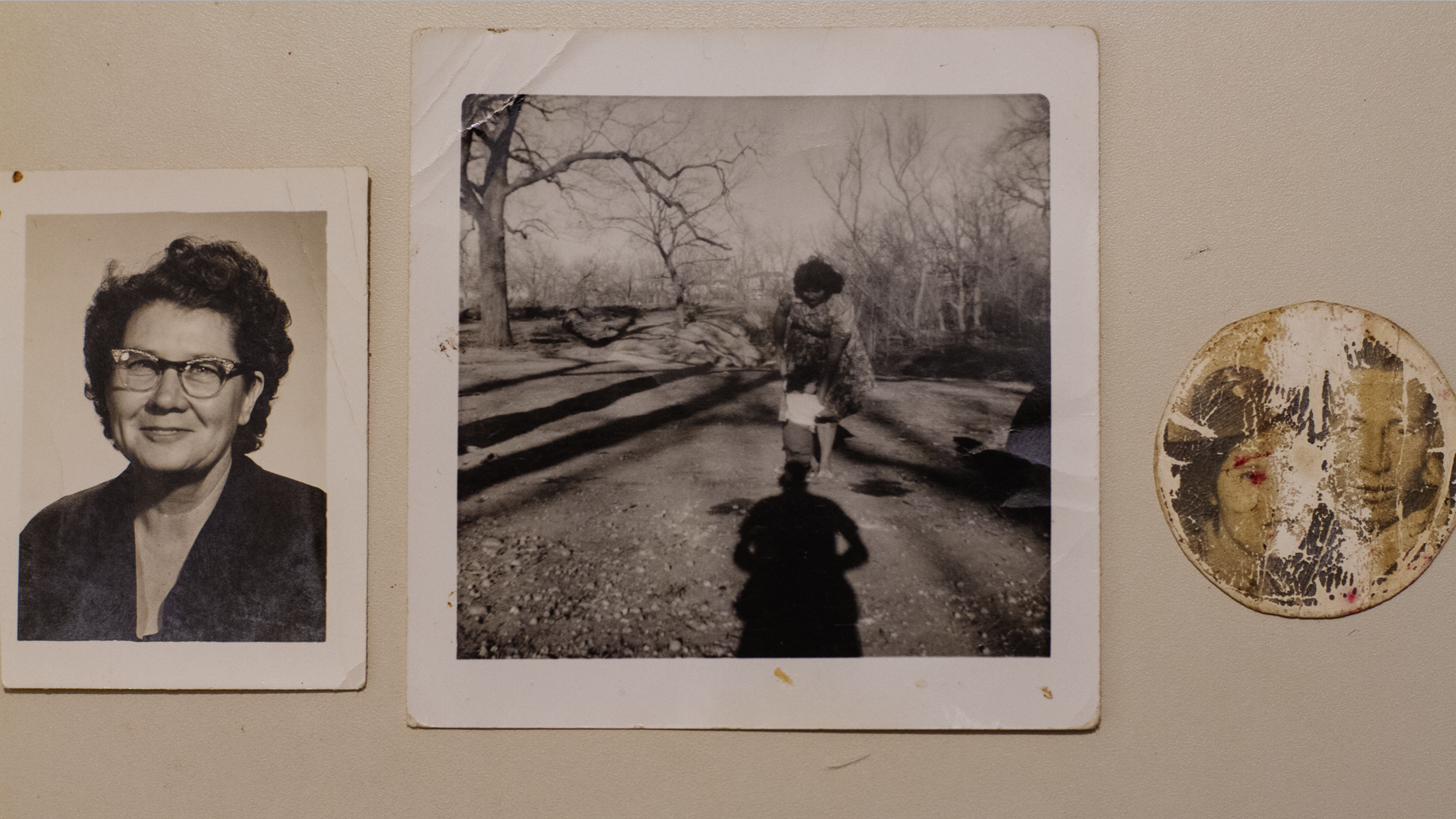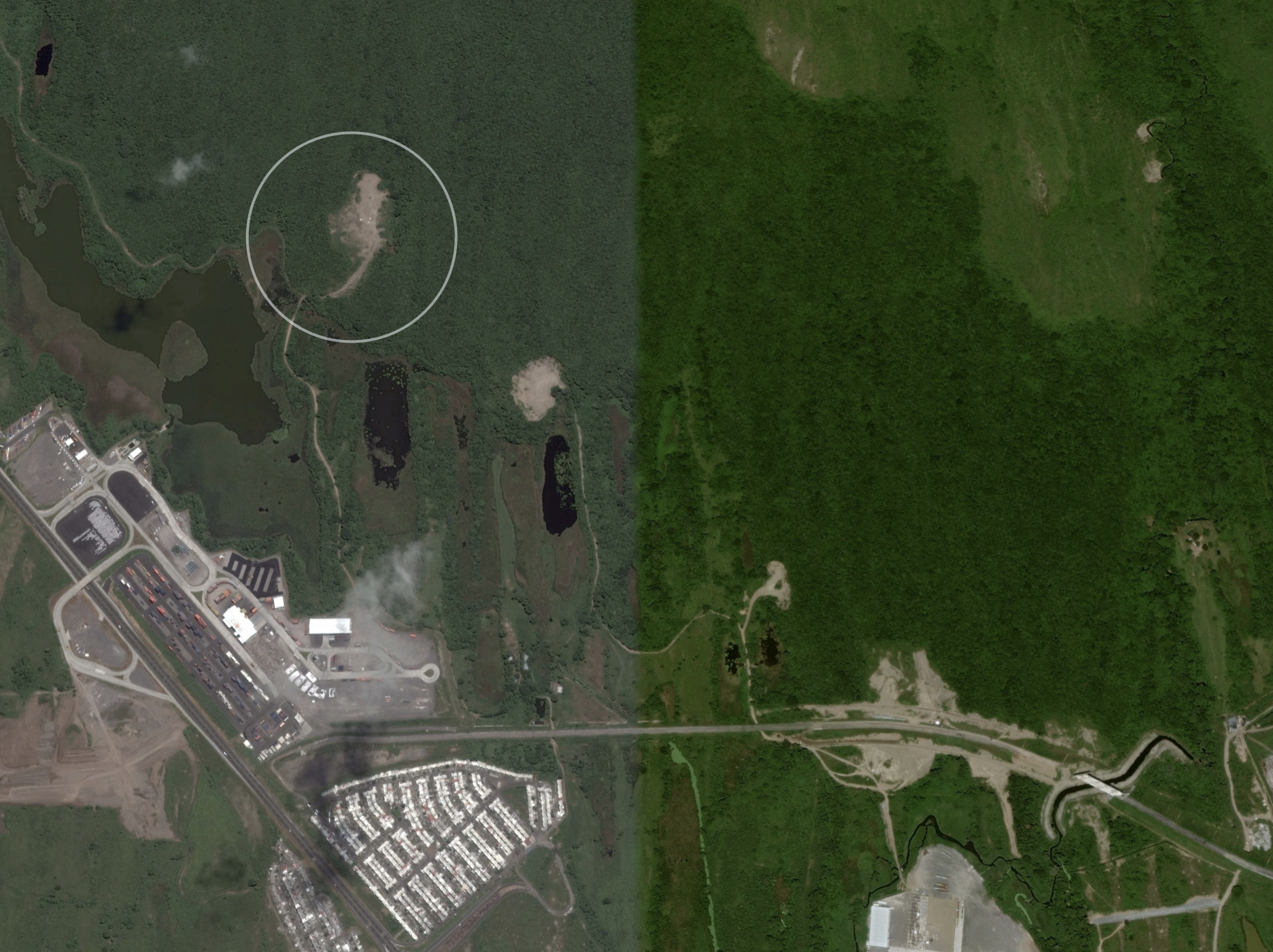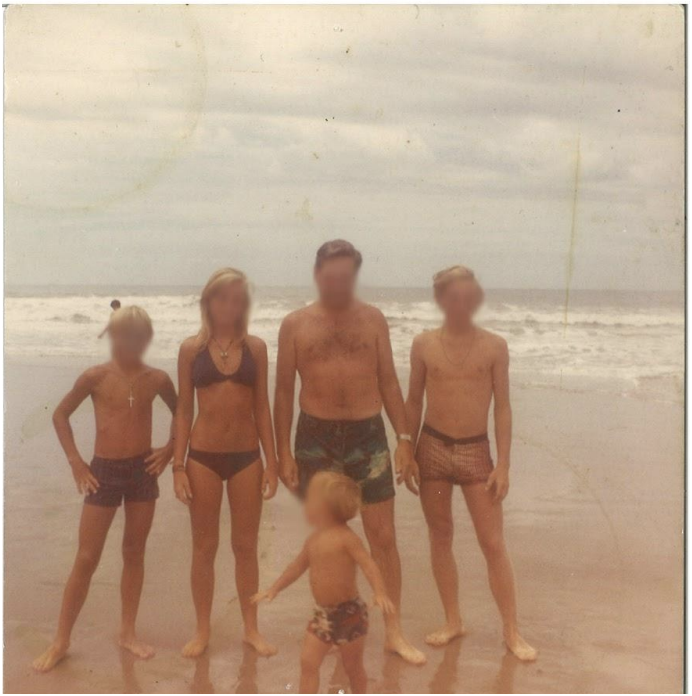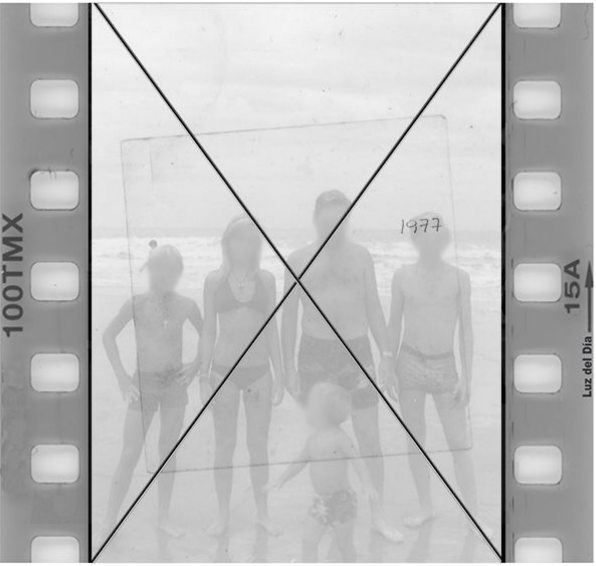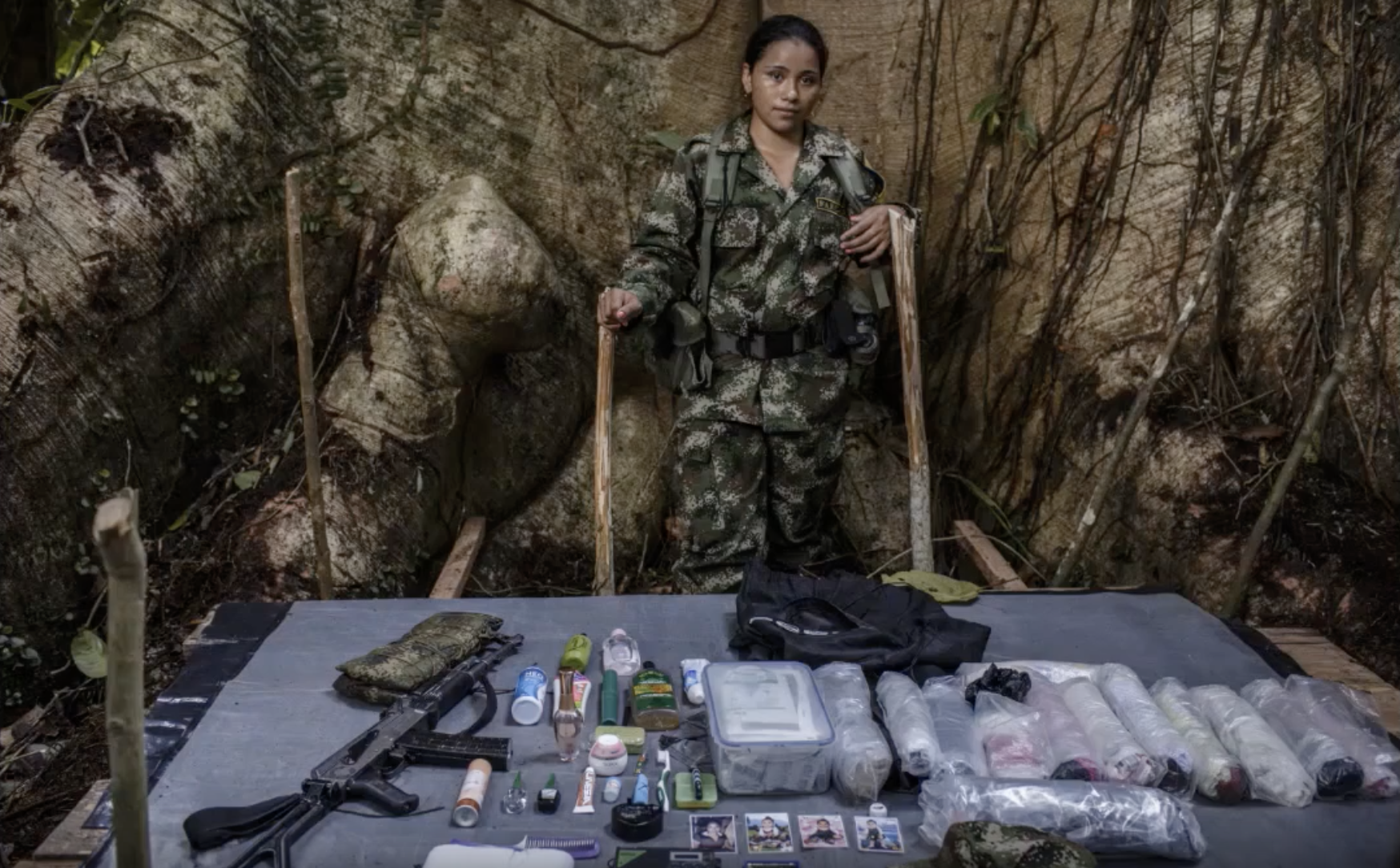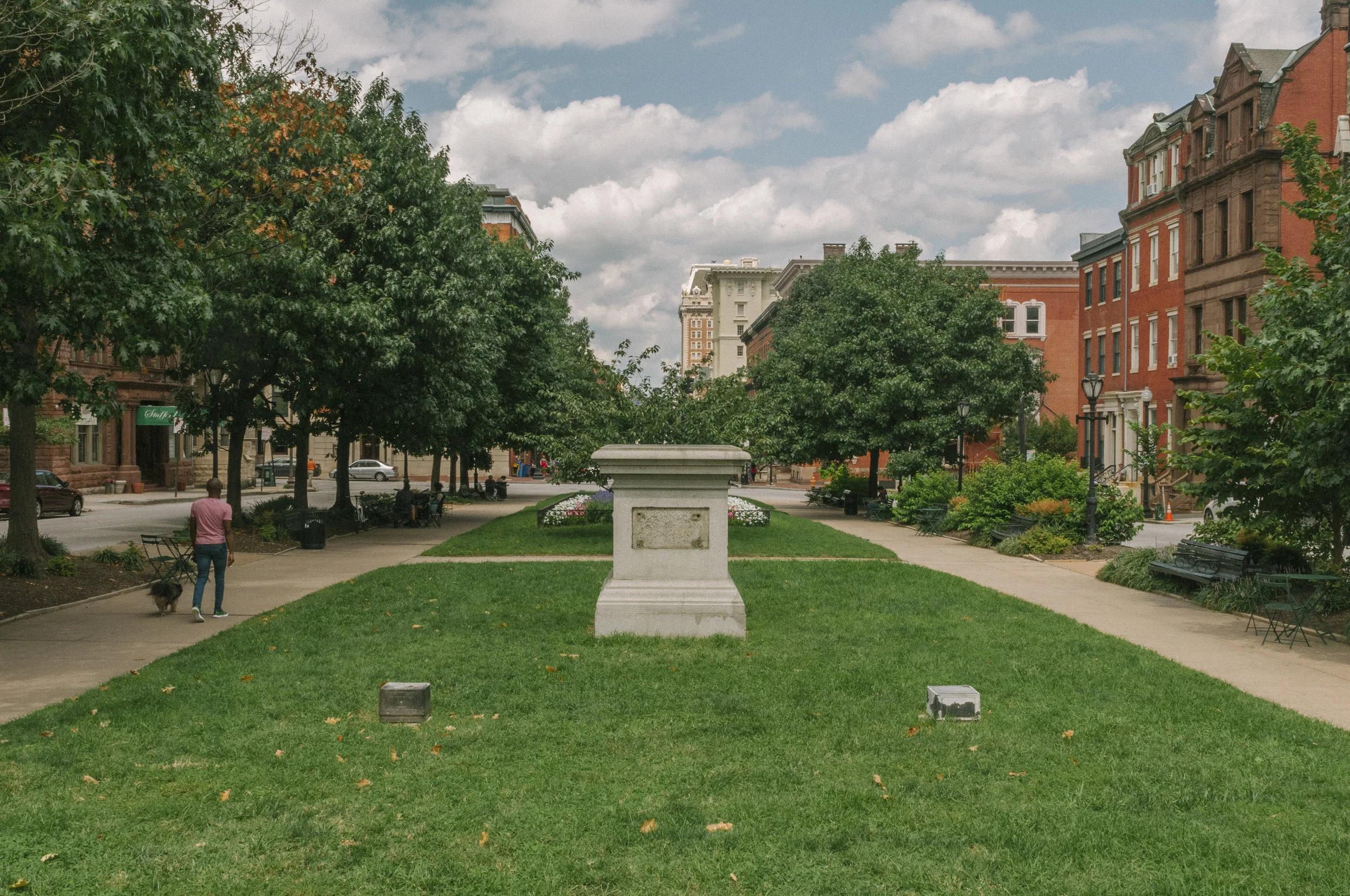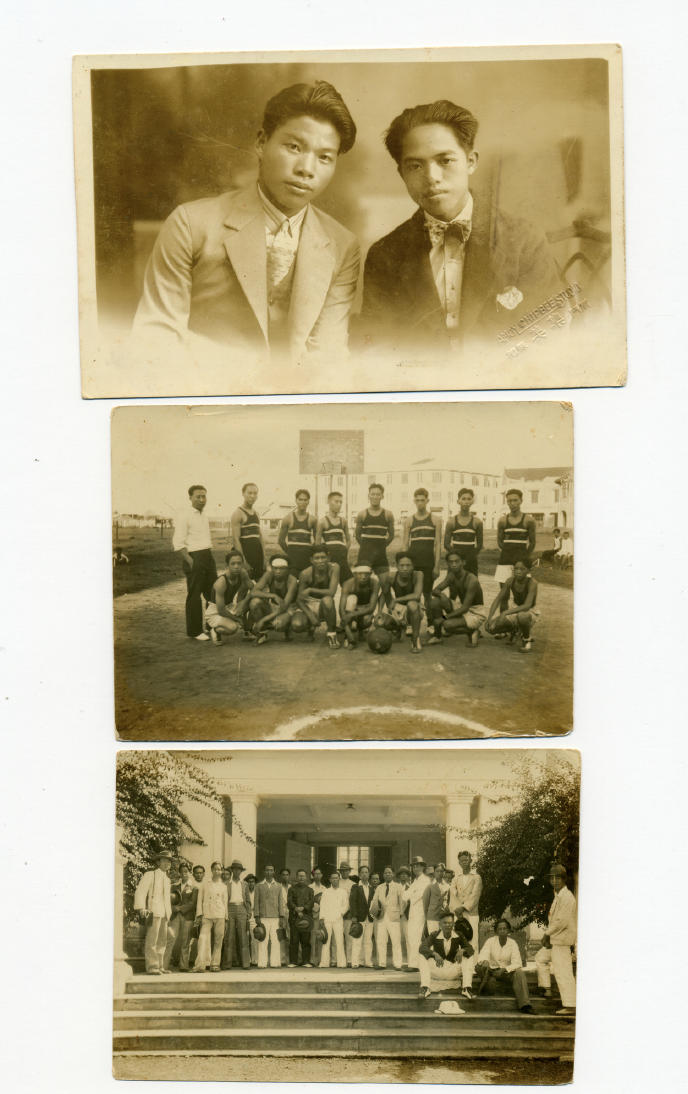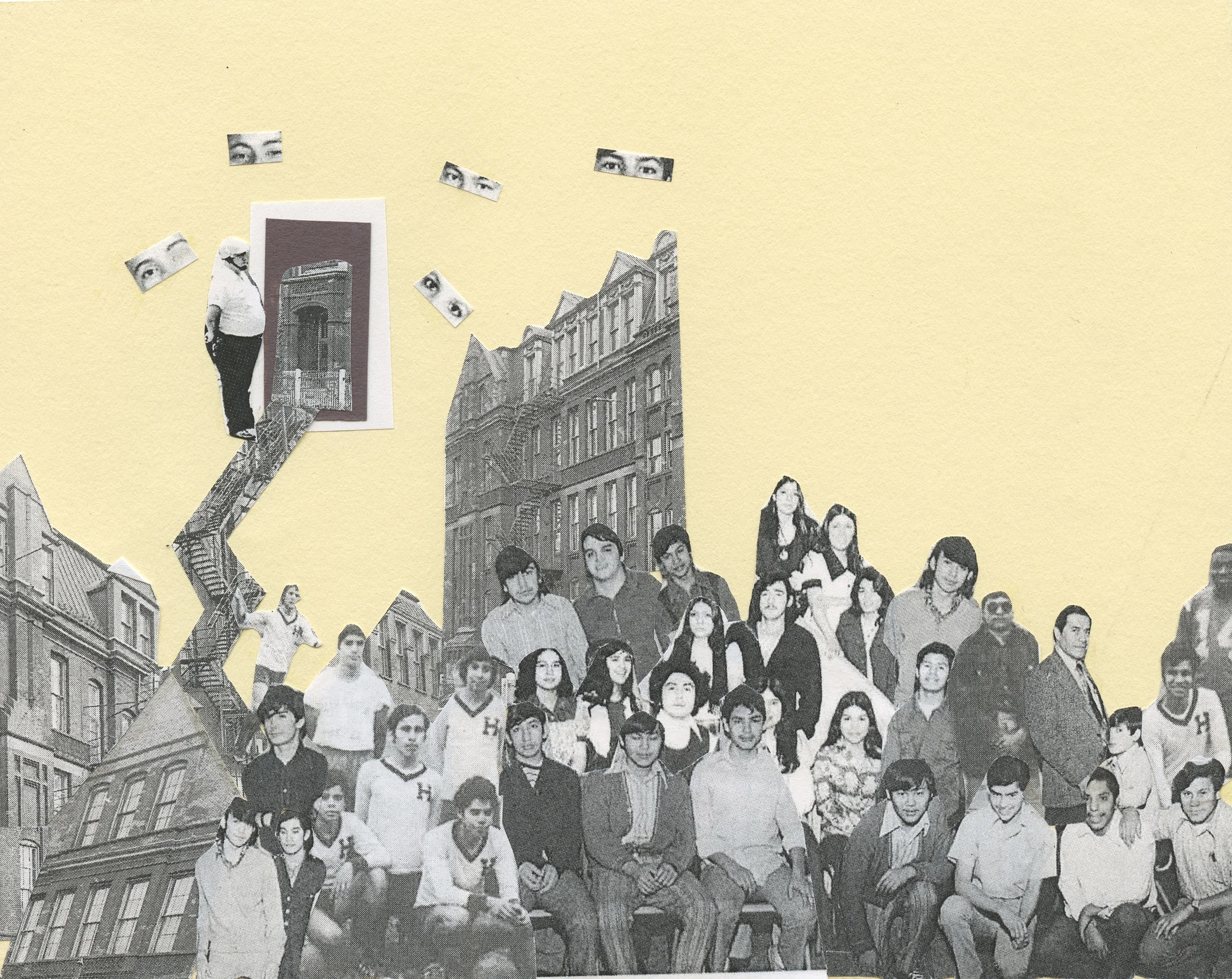Projects Developed at the Counter-Histories Lab
On April 16 and 17 in collaboration with the Brown Institute for Media Innovation, sixteen photographers, artists, academics, and media professionals chosen from an open call participated in an intensive, experimental laboratory to explore strategies for applying new digital tools to image-based stories.
They are: Noor Al-Samarrai, Tomie Arai, Juan Aranguren-Romero, Roger Archibald, Sim Chi Yin, Jonathan Gardenhire, Christopher Gregory, Brendan Hoffman, Nicole Marroquin, Hector Membreno-Canales, Stephanie Mercedes, Mark Murrmann, Emily Pederson, Robert Pluma, Alice Proujansky, and Zoraida Lopez.
Robert Pluma is a Mexican-American and Coahuiltecan documentary multimedia artist based in Brooklyn, whose work examines inequality in order to generate shifts in perspective and systemic change. Robert is creating an archive of ungathered artifacts, photographic records, and oral histories to challenge the prevalent narratives of Spanish settlement in the region of modern south Texas, where the history of the Coahuiltecan peoples of the region is underrepresented. By using immersive reality, new narrative possibilities emerge to allow visitors to the missions of San Antonio to interact with an alternative historical narrative.
“What’s taught to youth in the region is not quite accurate. It doesn’t quite give the whole picture of the experiences of the indigenous people of the area, or it tends to bend towards newer narratives over the past several decades, or even the century, of American exceptionalism.”
Emily Pederson is a documentary photographer with a focus on human rights issues and social justice. She has five years of experience documenting vulnerable communities in Mexico, from residents displaced by paramilitary violence in southern Chiapas to families of the disappeared in Guerrero, a state devastated by drug war violence. Building on an established body of work about the families of the 43 disappeared students, she is now incorporating satellite imagery and records of clandestine graves of the victims of the drug war in Mexico to create an interactive map of data not being collected or updated elsewhere. She’d like her work to contribute to groups investigating mass graves via machine learning, and is interested in satellite imagery as an investigative tool that could work with geo-locative media, augmented reality, and interactive design.
“The drug war started in 2006, and 2017 was actually Mexico’s most violent year on record. At the same time, 2018 is on track to top that. So it’s really important to look at the toll of the drug war right now.”
Stephanie Mercedes is a Argentinian artist whose research based practice intersects with the law and justice while questioning the purity of the documentary image, the singularity of memory, and the purpose of the archive. Mercedes excavates histories of violence to create publicly accessible photographic archives in order to restore justice. There is a proposed copyright bill that would retroactively erase all images of the Argentine dictatorship (1976-1983) from the public domain. To counter this erasure she is layering multiple images together, cropping the images, reverting the image back into a negative, and negating the image with a “X” in order to have the legal rights to personally copyright the altered images and thereby return them to the public domain.
Alice Proujansky is a documentary photographer who is working with her father’s FBI file during the years he was with the radical group the Weathermen. Created through COINTELPRO, a project targeting political organizations, her dad’s FBI file and others like it were intended to sow fear, divide movements, and fracture allegiances. Counter to this goal, these documents now forge a valued closeness between Alice and her father. In researching, curating and photographing this archive, she subverts the intention of this thick file, shifting its meaning from division to connection.
Christopher Gregory is a Puerto Rican photographer based in New York whose work explores the residue of sociopolitical interventions and power, specifically looking at the imprint of colonialism in Puerto Rican society. His project ‘Las Carpetas’ taps into the never before seen police surveillance archive of the secret police of Puerto Rico housed at the National Archive in Puerto Rico that documents all the 40-year state surveillance program that at its height touched almost 150,000 people and left dozens dead. For next phase of the project, he plans to collaborate with trauma specialists to produce a video about Puerto Ricans’ perception of the surveillance.
“It’s not the actual content of the surveillance that matters it’s the fact that it’s happening and what chilling effect that has on civil society.”
Mark Murrmann is photo editor at Mother Jones Magazine with over ten years of experience and avid consumer of photographic work who has been involved in shaping a number of projects–from very traditional documentary work to more complicated projects that draw on unique archival sources. ’Invitation to a Hanging’ is a project on prison tourism–prisons in the United States that have been converted into tourist attractions. The work examines why and how these sites were readapted for tourists and how visitors interact with them.
Tomie Arai is a visual artist who has collaborated extensively with historians and archivists, and has several decades of experience documenting and archiving the histories of underrepresented communities, particularly in Chinatown as a founding member of the Chinatown Arts Brigade. ‘Here to Stay’ is an augmented reality project about gentrification and displacement in New York’s Chinatown with a number of component pieces that will begin with archival research, photography and community mapping.
“I think that we haven’t really allowed ourselves to imagine what we could be like in the future, and how we could really make the best use of the technology that’s available to reach a much broader audience and also to animate the stories of the residents that we’re working with.”
Juan Aranguren-Romero is a psychologist and a historian from Colombia who has an M.A. in Social Anthropology and a PhD in social sciences. He created a social lab called la ética de la escucha [the listening lab], that works with journalists, photographers, psychologists, forensics and academic researchers building tools for develop new ways of relationship with the pain and suffering. He is currently working with 48 photos of war and political violence from 12 Colombian photographers in order to understand the phantasmagorical presence of violence in the representation of war in Colombia.
Hector Membreno-Canales is a U.S. army veteran who teaches photography to Vietnam-era veterans diagnosed with PTSD through the Josephine Herrick Project, and he is also the military news and culture producer for Task & Purpose, a news website geared toward the Post 9/11 generation of military veterans. His project ‘After-Ozymandias’ visualizes the remains of destroyed confederate statues and aims to highlight how Americans are ready to tear-down Confederate monuments that memorialize controversial figures from public spaces. He is interested in using colonial archives, newspaper archives, museum archives, and other existing collections and artifacts to more clearly unpack and contextualize the shifting meaning of these monuments.
“I’m hoping that by documenting photographing these plinths after the monument has been removed, it creates an alternative narrative to who’s in charge to what public spaces should look like.”
Roger Archibald is a longtime environmental photojournalist who has served as photo editor for the Society of Environmental Journalists, and was a co-founder and charter board member of the North American Nature Photography Association. He is revisiting the historical Project Documerica archives, the photography project launched by the Environmental Protection Agency during the 1970s whose purpose was to document U.S. environmental conditions in order to create a visual baseline for the agency during its early years. Incorporating geo-locative media, he is seeking to replicate the Documerica effort, even enlisting photographers who participated in the original.
Noor Al-Samarrai is first-generation Iraqi American poet and performer, with an urban planning background and a highly interdisciplinary practice who uses poetry, personal stories, memories, sketches, and dreams as alternative descriptions of highly orientalist and exoticized descriptions of Baghdad. Her project is an attempt to poetically reconstruct Baghdad, on an infrastructural and human level based on oral histories she collected with Iraqis living in diaspora in Amman, Jordan. These oral histories serve as the primary source texts for a poetry collection illustrating love and life in mid-20th century Baghdad.
Sim Chi Yin is documentary photographer who holds degrees in history and international relations from the London School of Economics. Taking her family history as a point of departure, this work explores a hidden chapter of the Cold War in Asia – the resistance of the Malayan Communists against the British in the 1940s – 1960s. Using photographs, archival documents, objects used by the Malayan Communist guerillas, oral histories and recorded revolutionary songs, it documents and imagines a complex time of war that has left unspoken trauma, a piece of the legacy of British colonial rule in its empire. Chi Yin is grappling with the gaps in the official colonial archives — trying to fill in the missing parts of the official narrative, but also questioning the act of archiving itself.
“I’m interested in the people whose voices are not recorded in any official archive at the moment. And I think a lot of people know about Vietnam and the Vietnam War and what America did there, but the chapter that I’m looking at is the kind of the precursor of Nam.”
Brendan Hoffman has worked as a freelance photojournalist and documentary photographer for ten years. Looking closely at photo albums assemble by labor unions, his project explores themes of identity and representation connected to a small town called Webster City, Iowa, where many local residents are being forced to reinvent themselves and their conception of the American dream since the local factory, which employed nearly 2000 people, closed and moved to Mexico in 2011. He is researching similar collections and albums assembled by labor unions across the rust belt to build a curated archive of blue collar, middle class life and how it was portrayed from the inside in the late 20th century.
“When was America great? And who was it great for?”
Nicole Marroquin is a public scholar and cultural worker with a background in studio art, social practice and education. In 1968, students protested terrible school conditions and racist curriculum, resulting in a violent police crackdown and harassment from a secret arm of the Chicago Police called the Red Squad. She is working with students to do critical re-readings of academic papers, public health reports, newspaper and police surveillance of their community on the Lower West Side of Chicago. She would like to continue this work by creating speculative historical accounts of events that do not simply tell the story, but rather ask questions- and interleave current struggles.
Jonathan Gardenhire is an artist and photographer investigating how forms of value, knowledge, and social change are produced in contemporary art and image-making.‘Requiem for the Price of Culture’ is a series of found and constructed images depicting and reflecting the life of the residents of Smith Houses, a public housing development in the Lower East Side. The project uses image-making as a tool to investigate representations of race and housing in visual culture. Jonathan is developing new ways of thinking about his still-life images that include archival materials and expand ability of these images to engage the viewer.
“I grew up in the Smith houses, and from the time that I was about 19 through the time that I turned 20, I was the vice president of the Resident Association. I worked really closely with residents to create programming and sort of be like a liaison between elected officials and residents. And since moving to Harlem, I wanted to create a project that goes back to where I’m from and and really explores that history.”

